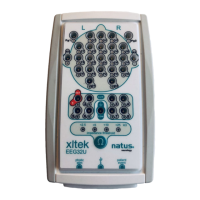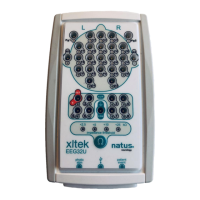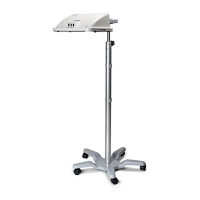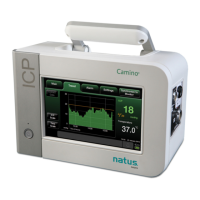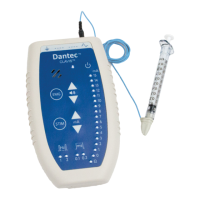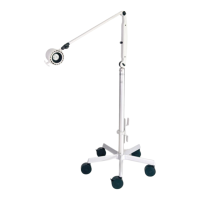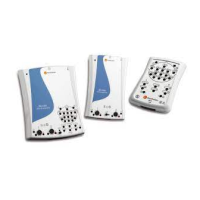Instructions for Use XLTEK Protektor32
8
Operation in close proximity (for example 1 m) to shortwave or microwave therapy
equipment may produce instability in the electrical stimulator output.
The device is NOT intended to operate in the vicinity of strong sources of potential
electromagnetic interference such as MRI or CT.
Electrostatic Discharge (ESD) Precaution: Be sure to take the appropriate
Electrostatic Discharge (ESD) precautions. Disconnect the cables before
moving, cabling, or performing any set up procedures. Connectors marked with
the ESD protection symbol should not be touched.
All wires to/from the patient must NOT contact any of the conductive parts of the device
including earth.
Preventive maintenance is required every six months. This should include chassis and
patient leakage current measurements at a minimum.
The device is not protected against defibrillation. All wires to/from the device should be
removed before using a defibrillation.
Do NOT use this device in the presence of implanted electronic devices unless a specialist
medical opinion has been obtained.
Do NOT place the stimulation electrodes such that the stimulation current will be trans-
thoracic (crossing the area of the chest and thorax.)
The Protektor32 headbox carries ordinary classification for the level of protection against
ingress of liquids (IPX0). It is not drip or splash proof.
The Protektor32 headbox requires a properly grounded electrical outlet. The internal
isolation transformer must not be bypassed under any circumstances.
Stimulating electrodes must be large enough so that the current density is always less than
2 mA r.m.s./cm2. Current densities exceeding 2 mA r.m.s./cm2 may require special
attention of the operator. For example, if the stimulus is stimulating at 100 mA at 10 Hz,
with a duration of 1 ms, then the stimulus electrode must be at least 0.5 cm2.
For a detailed description and calculations of the stimulation parameters needed to achieve
less than 2 mA rms / cm2 refer to section Using the TcMEP Module on Protektor32
.
When an electrode with a small surface area is used (such as a needle electrode), the
current density rises.
Current density in TcMEP mode is dependent on the stimulation strength (voltage) and
number of pulses. If the stimulation parameters are different from those detailed in the
table and the voltage is greater than these thresholds, it may cause skin burns.
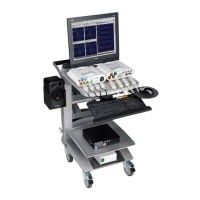
